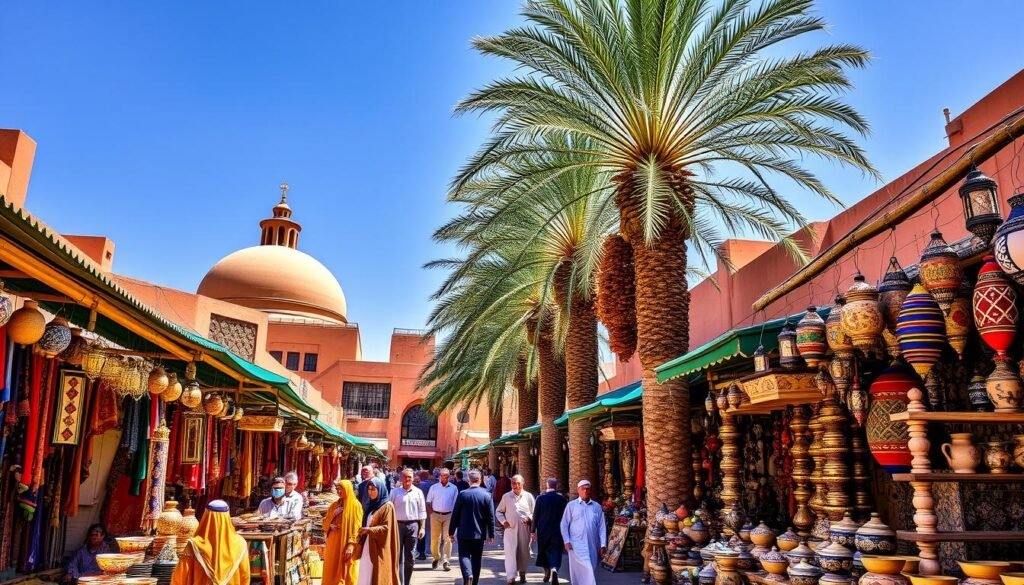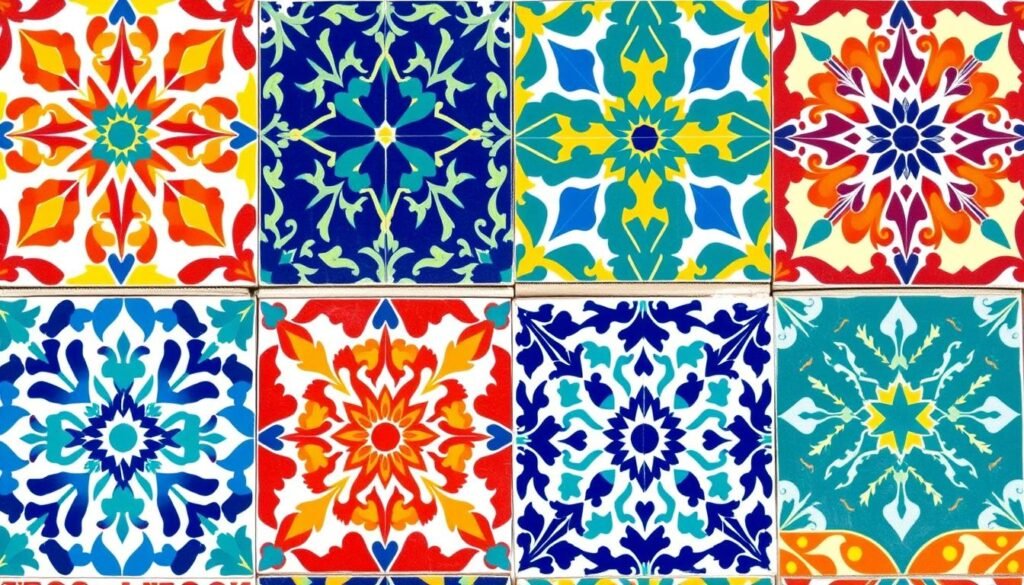Step into the colorful world of Morocco coloring pages. Here, your creative spirit can soar. These pages bring the beauty of Moroccan patterns to life. They invite people of every age to dive deep into their imagination.
As you color each design, you’re wrapped in Morocco’s rich stories and textures. Your creativity will bloom as you explore what makes Morocco’s art stand out. Let each page take you on a journey through Morocco’s unique charm.
Key Takeaways
- Morocco coloring pages inspire artistic expression for all ages.
- Engaging with Moroccan patterns enhances creativity.
- Coloring is a fun way to discover Moroccan culture.
- Experience the beauty of intricate designs through art.
- These coloring pages serve as a gateway to Moroccan aesthetics.
Introduction to Morocco Coloring Pages
Morocco coloring pages are a great way to learn about Morocco’s art. They welcome everyone to a world of complex designs, bright colors, and interesting patterns. When you color these pages, you get to express yourself in a new way. This lets you connect with Moroccan culture creatively.
Every page has different shapes and beautiful floral designs. These details grab your attention and spark your creativity. Coloring these pages is relaxing. It helps focus your mind and frees your imagination.
If you’re looking for something new, these pages are perfect. They offer a chance to find your artistic side. You get to see beautiful Moroccan patterns and textures. This journey in art lets you express yourself and improve your skills. Plus, coloring has a calming effect that many enjoy.
Discovering Moroccan Culture
Moroccan culture is a vibrant blend of Berber, Arab, and French traditions. These influences make up the nation’s identity. They also shape its artistic side.
The Rich History of Morocco
Morocco’s history spans centuries, shaped by various civilizations. The Berbers, its original people, are at its core. Arabic and Islamic traditions, along with French influence, also play a big part in its culture.
Influence of Moroccan Culture on Artistic Expressions
In Morocco, art tells stories of history and tradition. Music, dance, and visual arts mix the old with the new. This blend captures the essence of Moroccan spirit.

Understanding Moroccan Patterns
Moroccan patterns are a rich tapestry of culture and history. Each element in these designs carries deep meaning. They showcase diverse influences that have shaped Moroccan art for centuries. Geometric designs and floral motifs are especially notable.
Geometric designs are known for their precision and beauty. Meanwhile, floral motifs add a natural touch to the art.
Geometric Designs and Their Significance
Geometric designs are key in Moroccan patterns. They reflect Islamic art’s focus on mathematical precision and spirituality. These designs create captivating visual effects in various art forms.
Shapes like squares, circles, and stars show the universe’s balance. The beauty of geometric designs draws people into a world of patterns.
Floral Motifs in Moroccan Art
Floral motifs are also crucial to Moroccan patterns. They bring elegance and a sense of life. These motifs, featuring flowers and foliage, symbolize nature’s abundance.
Floral elements evoke tranquility and a connection to the earth. They blend with geometric designs, forming a rich visual story. This mix shows how nature fuels creativity.
Exploring geometric and floral motifs gives insight into Moroccan art’s significance. For those looking to add these patterns to coloring pages, it’s important to know their history and meaning. Check out this guide to discover the beauty of Moroccan designs.
Exploring Moroccan Tiles
Moroccan tiles are beautiful and unique, especially Zellige tiles. These tiles, made by hand, show off bright colors and detailed designs. They bring the rich history and culture of Morocco to life. The designs in Zellige tiles not only serve a purpose but also inspire creativity.
Importance of Zellige Tiles in Morocco
Zellige tiles are crucial in Moroccan architecture and design. Making them is an art that goes back centuries. Craftsmen shape each tile by hand for perfect mosaics. The colors of Zellige tiles often come from nature. This creates a timeless look that fits in both modern and old-style interiors.
How to Integrate Tile Patterns into Coloring
Adding Zellige tile patterns to coloring can make simple pages more creative. You can use many coloring methods to bring out the brightness of Moroccan tiles. Here are some tips:
- Use vibrant colors to look like Zellige tiles.
- Try geometric designs for artwork that reflects Moroccan style.
- Adding layers of colors adds depth and makes your project stand out.
- Shading helps your work look more like real tiles.

Let Zellige’s unique features inspire you as you color. They encourage you to express yourself through lively designs and new coloring methods.
Morocco Coloring and Its Benefits
Exploring Morocco coloring is like starting a creative and mindful journey. It offers many benefits, such as helping you relax. People find it’s a great way to reduce stress and take a break from life’s fast pace.
Therapeutic Effects of Coloring
Coloring Moroccan patterns has calming effects. It helps ease anxiety through the repetitive motion of coloring. This activity helps you feel at peace and improves your mood.
As you focus on coloring, you become more mindful. This mindfulness is good for your mental health, keeping your mind in the present.
Enhancing Creativity Through Coloring
Morocco coloring boosts creativity as well. The bright colors and complex patterns inspire artistic expression. They encourage innovation and letting your unique style shine through.
When you color, you dive into your creative side. This can improve how you think creatively and solve problems.
Moroccan Arts and Crafts
Exploring Moroccan arts and crafts opens up a world of beauty. Each piece, from pottery to textiles, tells a story of Morocco’s past. These crafts show the skills taught through generations, linking today’s art to old traditions. Artists now are not only keeping these traditions alive but also adding their own modern touches.
Traditional Crafts of Morocco
Moroccan artisans are known for their diverse and meaningful crafts. Key traditional crafts include:
- Pottery: These handcrafted pieces are vibrant and detailed. They feature patterns that celebrate Moroccan culture.
- Weaving: Traditional rugs and textiles mix geometric and floral designs. They capture the soul of Moroccan creativity.
- Leatherwork: Moroccan leather goods are famous for their quality. They combine function with beauty.
Modern Interpretations of Moroccan Art
Contemporary artists have started to explore Moroccan crafts, creating new pieces. They mix old methods with new ideas. This results in unique art that has a global appeal. Through marrying past techniques with today’s styles, the art produced is:
- Mixed media artwork that brings together traditional crafts and modern materials. It creates a new kind of visual story.
- Contemporary furniture that uses Moroccan patterns, making pieces both functional and beautiful.
- Fashion designs that use traditional textiles in new ways. Moroccan heritage is now seen on fashion runways worldwide.
This mixing of the old and new keeps traditional crafts alive. It shows how Moroccan art adapts and thrives today.
Captivating Moroccan Architecture
Moroccan architecture is truly fascinating. It blends traditional and modern styles beautifully. Its architectural highlights show great historical and artistic value. Famous structures like the Koutoubia Mosque and the Royal Palaces reflect Morocco’s rich culture. They are vital symbols of the nation’s identity.
Famous Architectural Highlights in Morocco
Every region in Morocco has unique architectural gems. Highlights include:
- Koutoubia Mosque: This landmark shows the beauty of Islamic architecture with its impressive minaret.
- El Bahia Palace: It stands out for its detailed mosaic works and beautiful gardens. It shows the luxury of Moroccan kings.
- Ait Benhaddou: A UNESCO site, this kasbah showcases traditional Berber architecture.
- Grand Mosque in Chefchaouen: Its stunning blue colors blend Islamic and local styles.
Techniques Used in Moroccan Architecture
Moroccan architecture is known for its unique building techniques. These techniques reflect the values and skill of the community. Important methods include:
- Adobe Construction: They use natural earth, showing Morocco’s commitment to sustainability.
- Intricate Tile Work: Called Zellige, this method uses geometric patterns to represent harmony and balance.
- Arches and Domes: Found in mosques and palaces, they add beauty and strength to buildings.
Moroccan architecture’s colors and patterns are deeply meaningful. They mirror themes seen across Morocco’s artistic traditions. To learn more about the beauty of Moroccan architecture, understanding these influences can enrich your appreciation of its artistry.
Moroccan Textiles and Patterns
Moroccan textiles are known for their vibrant colors and complex designs. They play a big role in Morocco’s rich culture. Traditional methods like weaving and dyeing are used to make beautiful rugs, tapestries, and clothes. These pieces are more than just useful. They carry stories from their regions, linking the past and present.
Traditional Textiles: Techniques and Uses
The beauty of Moroccan textiles comes from skills honed over centuries. Craftsmen use natural dyes from local plants and minerals. They weave by hand, creating unique items that are both pretty and meaningful. These textiles aren’t just for show. They’re used in homes and fashion, showing off Morocco’s skilled craftsmanship.
How Moroccan Patterns Inspire Coloring Pages
The patterns in Moroccan textiles are a great source of inspiration for coloring. Artists can use the bright colors and intricate shapes that Moroccan art is known for. Coloring with these designs lets people express their creativity. It also helps them appreciate Moroccan culture’s art deeper. Using these patterns in coloring books makes the experience more fun and enriching.





